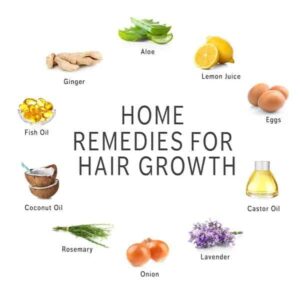Hey ladies !
Are you dreaming of long, luscious locks that turn heads wherever you go? Well, guess what? You don’t need to break the bank on expensive treatments or products to achieve your hair growth goals! At Salonlareine, we’re sharing our favorite natural remedies and DIY treatments that will help you unlock the full potential of your hair and promote healthy, vibrant growth from root to tip. Let’s dive in!
1. Coconut Oil Massage
Coconut oil is a powerhouse when it comes to promoting hair growth and nourishing the scalp. Warm up some coconut oil in your hands and massage it into your scalp in gentle, circular motions. Leave it on for at least 30 minutes, then wash it out with a gentle shampoo. Repeat this treatment once or twice a week for best results.
2. Aloe Vera Gel
Aloe vera is not just for sunburns – it’s also great for promoting hair growth and soothing the scalp. Apply fresh aloe vera gel directly to your scalp and massage it in gently. Leave it on for about an hour before rinsing it out with lukewarm water. Regular use of aloe vera can help strengthen hair follicles and prevent breakage.
3. Onion Juice Rinse
It might sound strange, but onion juice is packed with sulfur, which is essential for healthy hair growth. Blend a raw onion and strain out the juice, then apply it to your scalp and leave it on for 15-30 minutes before rinsing it out thoroughly. The sulfur in onion juice can help stimulate hair follicles and promote new growth.
4. Rosemary Infusion
Rosemary is known for its stimulating properties and can help improve circulation to the scalp, which in turn promotes hair growth. Brew a strong infusion of rosemary tea and allow it to cool completely. Use it as a final rinse after shampooing and conditioning your hair to reap the benefits of this herbal remedy.
5. Scalp Massage with Essential Oils
Treat yourself to a luxurious scalp massage using essential oils like lavender, peppermint, or rosemary. Dilute a few drops of your chosen oil in a carrier oil like jojoba or almond oil, then massage it into your scalp in gentle, circular motions. Not only will this help promote hair growth, but it’s also incredibly relaxing!
Bonus Tips:
– Green Tea Rinses: Green tea is packed with antioxidants that promote scalp health and stimulate hair growth. Brew a strong cup of green tea, allow it to cool, and use it as a final rinse after shampooing and conditioning your hair.
-Rice Water: Rice water is rich in vitamins and minerals that nourish the scalp and promote hair growth. Simply soak rice in water for 30 minutes, strain out the water, and use it as a rinse after shampooing and conditioning.
Remember, while these natural remedies can be beneficial for promoting hair growth, they should be used in conjunction with a prescription shampoo and conditioner recommended by your dermatologist or trichologist. Home remedies alone may not be enough to cleanse and condition your hair effectively, as their molecules are not small enough to penetrate the hair shaft in the same way as a conditioner and shampoo would do.
So there you have it – a treasure trove of natural remedies and DIY treatments to help you achieve the long, healthy locks of your dreams! At Salonlareine, we’re passionate about helping you achieve your hair goals in the healthiest and most natural way possible.
Don’t forget to share this blog with your friends and family who could use some hair growth inspiration, and tag us on social media using #Salonlareine and #NaturalHairGrowthRevolution. We can’t wait to see your beautiful hair transformations!
Love and Luscious Locks,
The Salonlareine Team

